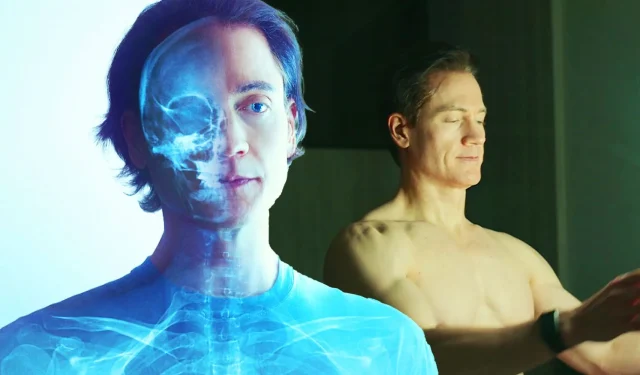
Don’t Die: The Man Who Wants to Live Forever – Key Insights from Netflix’s Captivating Documentary
Netflix’s latest documentary, Don’t Die: The Man Who Wants to Live Forever, delves into the life of social media sensation Bryan Johnson, a tech entrepreneur with a fervent obsession for anti-aging technologies. Claiming a desire to revert to the vitality of eighteen, Johnson’s journey is chronicled by director Chris Smith as he explores various experimental medical treatments and lifestyle modifications designed to achieve his youthful aspirations.
1. Bryan Johnson Listens to His Organs for Dietary Guidance
In a fascinating approach to health, Bryan Johnson explains that instead of relying solely on his mind for decisions about food and exercise, he tunes into the signals from his own organs. He asserts, “My body asks me to do around 100 things every day,” which he believes has contributed significantly to his health successes. This unique methodology is complemented by consultations with doctors and advanced algorithms.
2. A Strict Morning Regimen Begins His Day
The documentary details Johnson’s meticulously structured morning schedule. He adheres to a sleep routine that sees him retiring at 8:30 PM and rising by 4:30 AM. After engaging in various health practices—including taking a series of supplements, undergoing HRV therapy, and partaking in intense workouts—he incorporates multiple treatments aimed at rejuvenation.
3. Unique Measurement of Aging: 8 Months for Every Year
Johnson introduces the concept of “speed of aging” to the film’s audience, a metric indicating how much a person ages biologically within a year. At the time of filming, he reported a speed of aging of 0.69, translating to only eight months of perceived aging for every twelve months lived. This intriguing insight into his aging process sparked interest, especially as his speed declined further by November 2024.
4. Early Experiences Shaped His Success with Braintree
Johnson traces the roots of his successful payments company, Braintree, back to his experience as a door-to-door credit card processing salesman. His fascination with online transactions developed here, particularly influenced by studying PayPal’s growth and acquisition story. Braintree’s remarkable success, including acquiring Venmo, marked a pivotal point in his career as he used the profits to fund his health initiatives.
5. A Significant Transition from Mormonism
The film explores Johnson’s upbringing within the Church of Jesus Christ of Latter-day Saints and how his departure from the church influenced both his personal life and health journey. This pivotal moment came shortly before he founded Project Blueprint, an initiative that significantly impacted his mental and physical well-being.
6. The Use of Rapamycin: An Experimental Anti-Aging Drug
Another focal point is Johnson’s use of rapamycin, a drug originally intended to suppress immune responses in organ transplant patients. He uses it for its potential anti-aging benefits, despite its risks, including serious infections. Expert commentary from Dr. Andrew Steele highlights the need for further research on its effects on human longevity.
7. Skepticism from Medical Professionals
Despite advocating for his health practices, Johnson’s methods receive skepticism from various medical experts. While he claims his efforts contribute to scientific understanding, doctors like Dr. Vadim Gladyshev assert that his experimental protocols provide minimal scientific contribution.
8. Controversial Plasma Exchange with His Son
One of the documentary’s most eye-catching revelations is Johnson’s choice to engage in plasma exchanges with his son. This controversial method stems from studies showing potential anti-aging effects in mice through similar procedures. Though not as drastic as surgical methods, the plasma transfusion showcases the lengths Bryan is willing to go for perceived youthfulness.
9. The Emotional Toll of Personal Relationships
The film touches on the complexities of Johnson’s personal life, highlighting the sensitive issue of his separation from fiancée Taryn Southern while she battled breast cancer. A lawsuit brought against him underscores claims of emotional and financial hardship during this tumultuous period.
10. Gene Therapy at Minicircle: A Radical Approach
Lastly, the documentary discusses Bryan Johnson’s experiences with gene therapy conducted by Minicircle, a company based in Honduras. This unconventional therapy boasts reversible gene treatments, and Johnson reported notable muscle mass increases following his procedures there.
As viewers engage with the film, it becomes clear that Bryan Johnson’s quest for eternal youth is as much about personal exploration as it is about scientific inquiry. Don’t Die: The Man Who Wants to Live Forever serves as both an inspiration and a cautionary tale in the pursuit of longevity.
Sources: Don’t Die: The Man Who Wants to Live Forever, Medium, People




Leave a Reply ▼